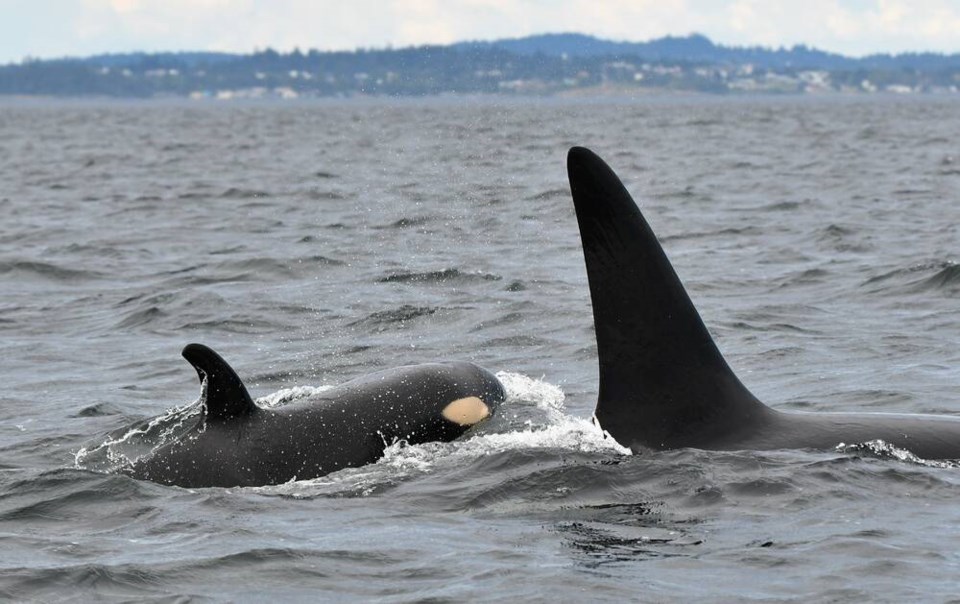Researchers have confirmed the birth of a southern resident killer whale after the calf was spotted swimming in the waters off the west side of Vancouver Island.
The Center for Whale Research, based in Friday Harbor in Washington state, has dubbed the latest addition K45 after staff spotted it in a tight group with other K-Pod family members northeast of Race Rocks, off Greater Victoria, on Saturday.
The centre received video and photographs of what was thought to be a new calf in April and June, buoying hopes for the southern resident population — an endangered species that has stagnated since 45 whales were killed or abducted as a spectacle for marine parks more than 50 years ago.
Now a field biologist was among those who confirmed its presence, though the calf’s sex is not yet known.
K45 is K-Pod’s first baby since 2011, when K27 gave birth to a calf called K44, the centre said.
With 16 confirmed members, K-Pod is the smallest of the three southern resident killer whale families. Together with J-Pod and L-Pod, the endangered southern resident population peaked at 98 animals in recent decades. But its population has since taken a downward turn, declining to 73 confirmed whales by the end of 2021.
J-Pod also welcomed a new calf this year: a female born in February.
The growth of the southern resident population is largely limited by the number of females who are of reproductive age, according to the Center for Whale Research. “While one calf won’t save the population, we hope that J59 can grow to adulthood and contribute to future generations of southern residents,” it said when the calf's sex was confirmed.
All 25 members of J-Pod returned to the Salish Sea for only the second time during the month of May over the past five years, swimming in Haro Strait, the Strait of Georgia near the Fraser River and down into the San Juan Islands.
Since then, the Washington Department of Fish and Wildlife has said at least 13 southern resident killer whales appear to be in poor condition based on measurements of fatness behind the skull. The reduced fat puts them at a two to three time higher risk of mortality.
The researchers noted several pregnancies among the whale population, alongside those in poor condition, in research using drone photographs conducted between September 2021 and April 2022.
The Pacific Whale Watch Association, which represents 29 whale-watching companies in B.C. and Washington state, said in January that 2021 was a record year for whale sightings in the Salish Sea.
— With files from Stefan Labbé, Glacier Media




